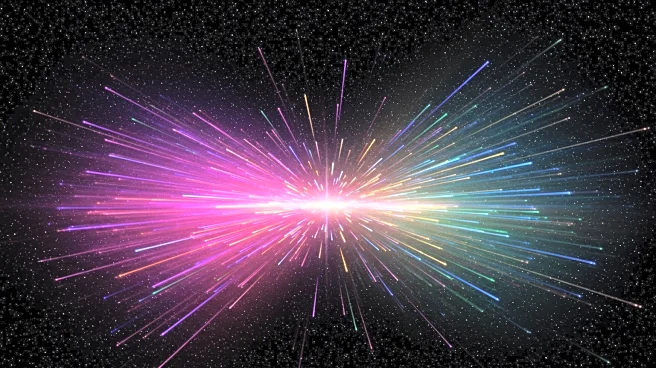What's Happening?
Astronomers have traced a fast radio burst (FRB) designated FRB 20240304B to a record distance across the universe, corresponding to a redshift of 2.148, or about 3 billion years after the Big Bang. Detected by South Africa's MeerKAT radio telescope array, the burst's light traveled over 11 billion years to reach Earth. The discovery involved multiple observatories and the James Webb Space Telescope, which helped identify the host galaxy. The FRB's origin suggests it may come from young magnetars, supporting theories about their sources.
Why It's Important?
This discovery significantly extends the reach of localized FRBs, providing insights into the universe's early history and the distribution of ionized baryons. The ability to trace such distant signals helps astronomers understand cosmic evolution and the conditions during the universe's 'cosmic noon,' a period of intense star formation. The findings also offer valuable data on magnetic field structures and galaxy formation, contributing to our understanding of the universe's development from its chaotic beginnings to its current state.
What's Next?
As next-generation telescopes become operational, astronomers anticipate more discoveries like FRB 20240304B, which will further illuminate the universe's distant past. These signals could become key tools in studying the universe's evolution, offering new insights into star formation and galaxy development during critical periods in cosmological history.
















